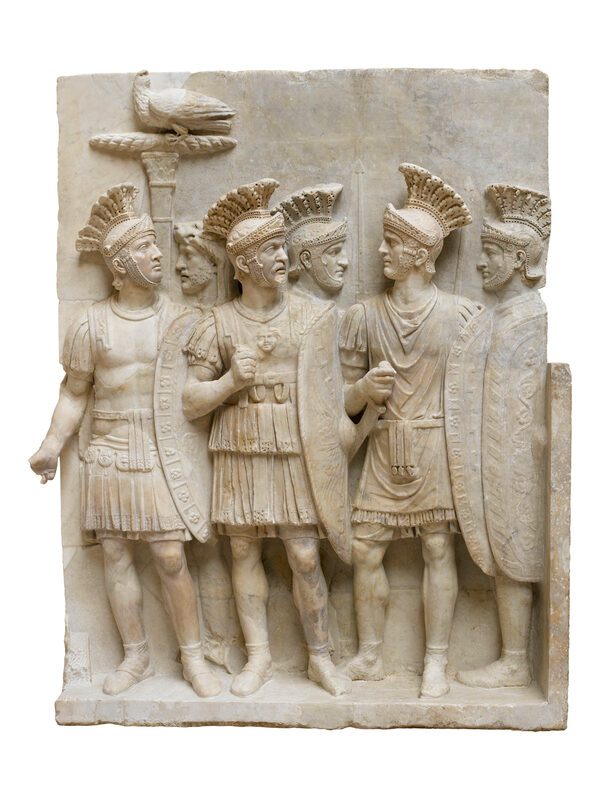|
Until 24th October the British Museum are hosting an excellent exhibition on Nero. I went along recently. It was very busy, like pre covid busy, which was quite nice to see. Although I must say I had enjoyed and been quite spoiled by the covid exhibition experience, where there almost no one there and you get to look at things, unobscured and unruffled by other people. So tip for busy exhibitions. Everyone goes in at roughly the same time, what with timed tickets and all and people bunch up in the first few rooms. Skip them. Start room 3 or 4, work your way to the end then go back. By this time everyone will have shuffled on and you can peruse things to your hearts content. This is what I did. I am interested in history. Very interested in fact but my the main way I related to this exhibition was artistically. And it is the ephemera that I found the most fascinating like this collection of bracelets, earrings and coins (above). It is interesting how similar the designs in the jewellery from the ancient world are to the modern. There is no photo of it here but the exhibit I found most fascinating where these two large lead ingots. They were like massive metal Toblerone’s, stamped with roman sigils and text. One was mined in Cornwall and one in Wales. Somehow they were fascinating. When you think ancient Rome, you think coins. And of course you have lots of coins. Nero came to power at the ridiculously young age of 16. He effectively shared power with his mother and she appears on several of the coins with him (like in the above). I found this fascinating and she is virtually the only female to appear on such coinage from the Roman period. Nero eventually tired of sharing power with his mother and had her killed (as he did to his mentor Seneca) The main thesis of the exhibition is was Nero as bad as he is popular reputed to be. One of the issues explored is Nero's popular appeal and how there were idols to him around the empire. Much is made of Nero appearing on stage, his building of a massive personal palace and of course the fire of Rome, which burnt down a large portion of the city. A fine object on display was this twisted and distorted iron grill, buckled by the heat of the fire. The popular myth is that Nero fiddled while Rome burnt but some sources indicate that he arranged efforts to try and put out the fire and housed people in his palaces. The idea they posit is that Nero was unpopular with the Roman elite and the Senate in particular. Certainly Nero used the Pretorian guard to safe guard his position of power. They do appear surprisingly camp (above). Nero lost his grip on power and eventually committed suicide, about the age of 30. After a violent interregnum he was eventually replaced by the pugnacious Vespasian. A concerted effort was made to erase the image of Nero and many were repurposed into statues of Vespasian like to the one above, which is also one of my favourite objects from the show. It was an excellent show.
0 Comments
Leave a Reply. |
Archives
June 2024
Categories |





 RSS Feed
RSS Feed